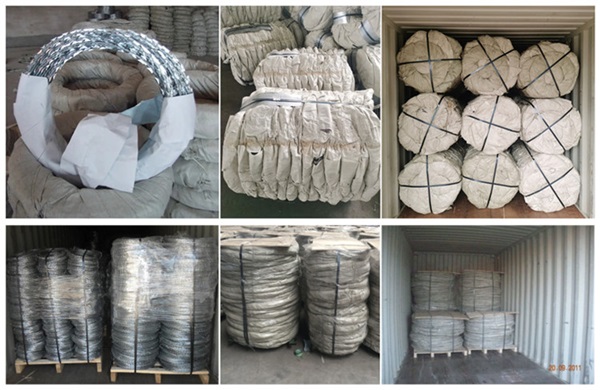Nov . 11, 2024 03:58 Back to list
Durable Wire Mesh for High-Quality Construction Reinforcement Solutions
High-Quality Construction Reinforcing Wire Mesh
In the world of construction, the use of high-quality materials is essential for ensuring the durability and strength of structures. One such critical component is reinforcing wire mesh. Widely employed in various construction applications, this material plays a pivotal role in enhancing the structural integrity of concrete, steel, and masonry projects. This article will delve into the importance of using high-quality construction reinforcing wire mesh, its benefits, applications, and factors to consider when selecting the right type for your project.
What is Reinforcing Wire Mesh?
Reinforcing wire mesh, also known as welded wire fabric, consists of a grid of steel wires that are welded together at specified intervals. It is used to reinforce concrete slabs, walls, and other structural elements. The mesh helps distribute loads evenly across the surface, reducing the risk of cracking and structural failure. Available in various sizes and configurations, high-quality wire mesh is manufactured to meet industry standards, ensuring reliability and strength.
Importance of High-Quality Wire Mesh
Using high-quality construction reinforcing wire mesh is crucial for several reasons. First and foremost, it significantly enhances the load-bearing capacity of concrete structures. When concrete hardens, it becomes strong in compression but weak in tension. Reinforcing wire mesh compensates for this weakness by providing tensile strength, thereby preventing cracks and promoting longevity.
Moreover, high-quality wire mesh is resistant to corrosion and rust, which are common threats to the integrity of construction materials. When choosing wire mesh, it is essential to select products that have undergone processes such as galvanization or epoxy coating. These protective measures extend the lifespan of the mesh, making it suitable for use in various environments, including those exposed to moisture or chemicals.
Applications of Reinforcing Wire Mesh
Reinforcing wire mesh has a wide range of applications in the construction industry. It is commonly used in residential, commercial, and industrial projects. Some typical applications include
1. Concrete Slabs Wire mesh is often embedded within concrete slabs to distribute loads and enhance crack resistance. It is frequently used in flooring, driveways, and pavements.
high quality construction reinforcing wire mesh

3. Road Construction High-quality wire mesh is utilized in roadways to improve the structural performance of asphalt and concrete surfaces, ensuring their ability to withstand traffic loads.
4. Precast Concrete Products Reinforcing wire mesh is integral to the manufacturing of various precast concrete elements, including beams, columns, and panels.
Factors to Consider When Choosing Wire Mesh
When selecting the right reinforcing wire mesh for your project, several factors should be taken into account.
1. Wire Diameter The thickness of the wires affects the mesh’s strength and load capacity. Thicker wires generally provide better reinforcement.
2. Mesh Size The spacing between the wires can vary, impacting the flexibility and strength of the mesh. Smaller openings often allow for better load distribution.
3. Material Coating As mentioned earlier, protective coatings such as galvanization can enhance the lifespan of wire mesh. Consider the environmental conditions the mesh will be exposed to when making your choice.
4. Compliance with Standards Always ensure that the wire mesh adheres to industry standards and regulations, which guarantees reliability and performance.
Conclusion
In conclusion, high-quality construction reinforcing wire mesh is an essential component in modern construction practices. Its ability to enhance the strength and durability of concrete structures makes it an invaluable investment for both residential and commercial projects. By understanding its applications and the factors influencing its performance, builders and contractors can make informed decisions that ultimately lead to safer and more durable structures. Investing in quality reinforcement materials is a step toward achieving excellence in construction.
-
Durable Hot-Dip Galvanized Farm Field Wire Fence | Farm Security
NewsAug.01,2025
-
Temporary Fencing Solutions-Anping County Xingzhi Metal Wiremesh Products Co.,Ltd
NewsJul.31,2025
-
Hop Dipped Galvanized / PVC Coated Temporary Fence - Anping County Xingzhi Metal Wiremesh Products Co., Ltd.|Durable Temporary Fencing&Cost-Effective Security Solutions
NewsJul.31,2025
-
Hop Dipped Galvanized / PVC Coated Temporary Fence-Anping County Xingzhi Metal Wiremesh Products Co., Ltd|durable temporary fencing&corrosion-resistant solutions
NewsJul.31,2025
-
Temporary Fencing Solutions - Anping County Xingzhi Metal | Galvanized PVC Coated Fences
NewsJul.31,2025
-
358 Anti-Climb Welded Wire Mesh Fence - High Security, Durable
NewsJul.31,2025



